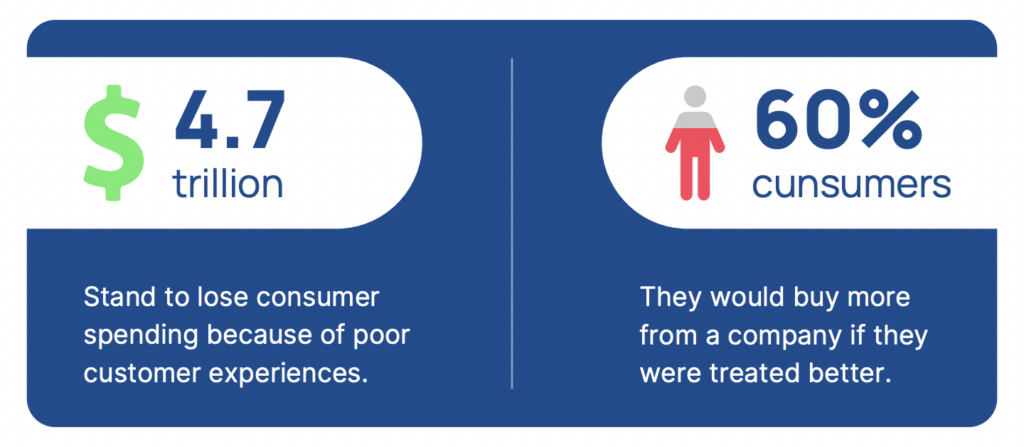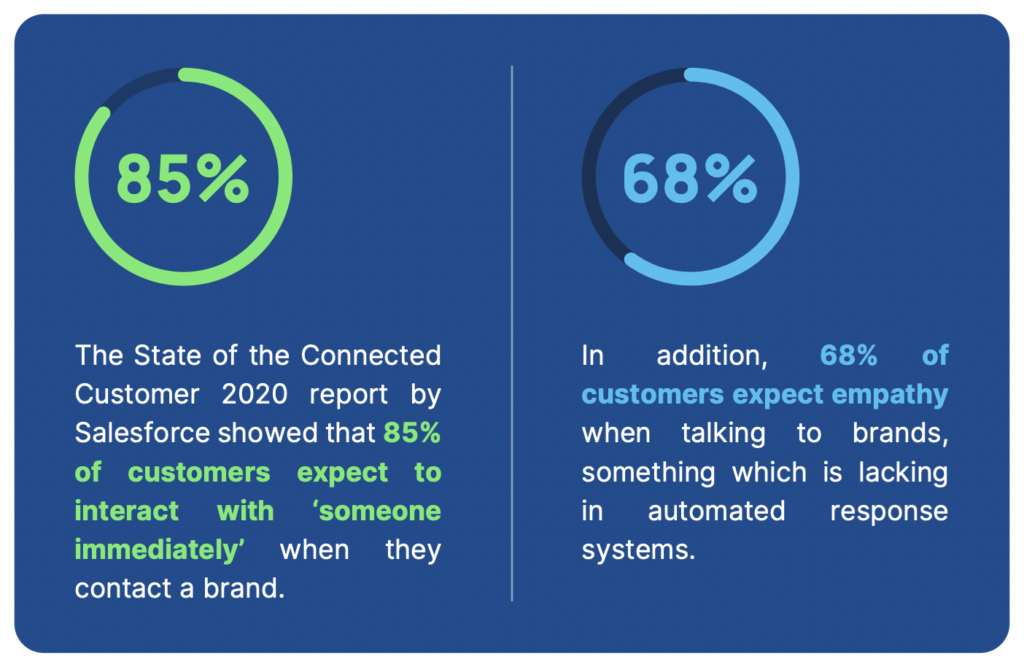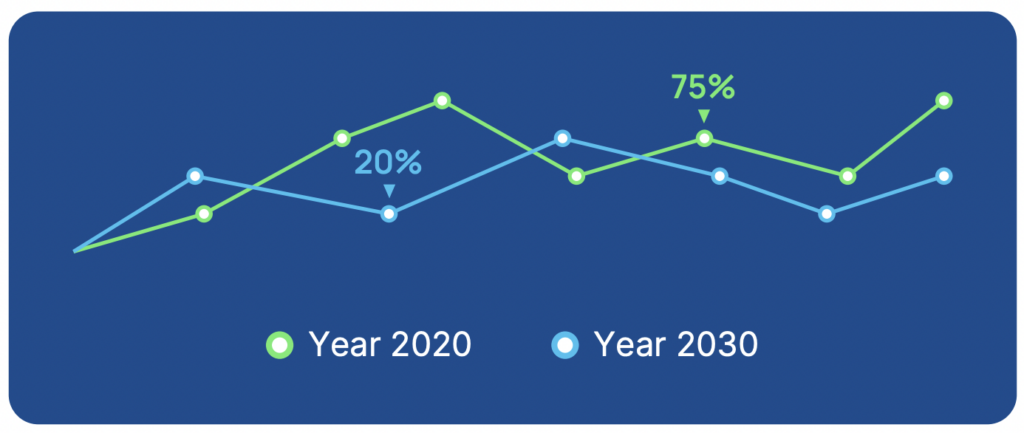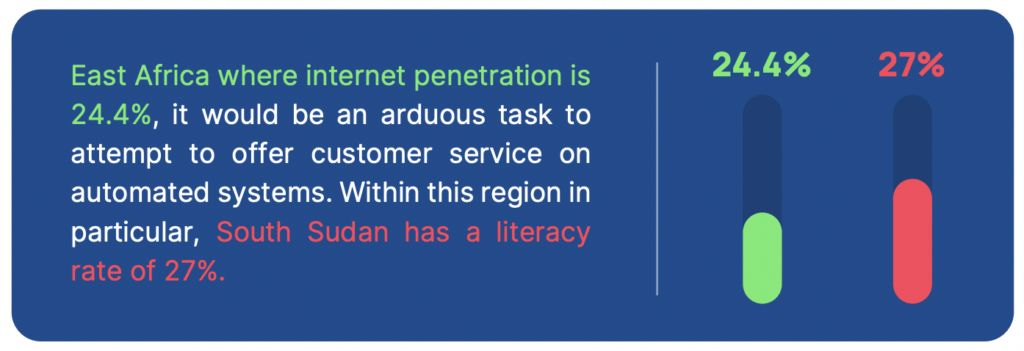Harshad Bajpai
May 2, 2022

Hello! Welcome to Skit.ai. Click here to book a demo.
May 2, 2022
In 2020, the University of Texas at Austin conducted an interesting experiment wherein 200 participants were invited to reconnect with an old friend through either a phone call or email. Despite admitting that a phone call would be more effective, some participants chose email to feel less awkward. And expectedly, those who connected through a phone call were able to form a stronger bond with their friend. It is the overall interaction experience that counts, be it in personal or professional settings.
Whether you were able to communicate, whether the other party understood your feelings, whether any misunderstandings were cleared and whether in the future both parties will be able to reestablish a connection. In the customer experience journey too, brands have chosen to connect with users over multiple points. There is text messaging, email, social media support, chatbots and the customer care centres/call centres.

Depending on the type of query, each customer is redirected to the specific touch-point. For instance, a customer seeking a bank account statement can simply get it through their net banking application while another customer looking for term insurance policies can get information through a chatbot. But for queries that require detailed insights, say reporting or KYC-related changes, customers are redirected to voice-based customer service executives.
Voice is powerful and unique to human beings. Speech goes back to human beginnings, which is almost a million years ago. The Linguistics Society of America estimates that writing was invented around 3200 B.C. It is the voice that gave rise to text, words and other forms of written communication. Because interacting through voice comes naturally to humans, it is self-taught. It is also easier to communicate thoughts through voice than any other medium simply because it is also upto seven times faster than typing. This means that one can have a longer conversation using voice.

Wait times are long and Interactive Voice Response (IVR) may not be helpful for emergency requests. Imagine your credit card getting stolen. You call up the bank’s customer care, but it takes you two minutes just to get to the appropriate node.
Another five minutes in reaching a customer care representative. And the ordeal still isn’t over because the customer care executive puts you on hold to verify details. Total time elapsed: 12 minutes. By the time the query is resolved, your card has probably been swiped at half a dozen places. An immediate solution is critical to protecting the brand reputation of companies. Ignoring customer grievances can often cost a company its clients. A study by Qualtrics XM Institute in the US found that 53% of consumers have cut spending after a single bad experience with a company.

Customers also complained that they missed a responsive mechanism in grievance resolutions. The answer is obvious. Customers prefer voice-based real interactions because this resolves queries quicker. And the practical solution is Voice AI. Built on the strong backbone of AI and Spoken Language
Understanding (SLU), Voice AI uses human-like mechanisms to receive requests, interpret and provide solutions.
NLP is the technology that the system uses to learn, understand and provide content in human languages. Unlike other solutions in this space, Voice AI is evolutionary. It can adapt to different commands and languages as it learns ‘on the job’ like us humans. Since NLP is at its core, Voice AI first hears the customer speak, converts it to text, filters out the noise, and then processes it with its neural networks. Following this, the system finds out the context of the conversation using AI. Based on this, a response is created and then communicated to the user by a
human-like voice. For instance, an individual who has a chequebook reissue request will have a different state of mind than someone who lost his debit card. Voice AI systems will differentiate between these two grievances and offer immediate support.

Whenever a customer contacts a company, they expect an instant response. An insurance customer only looking to renew their car policy is inundated with information about new products offerings. The same goes for bank/NBFC customers, where needless personal loans are pushed by the systems during such calls.
The pandemic added to such woes of customers. A Harvard Business Review study showed that there was an over 10% spike in ‘difficult’ callsigns in just two weeks between March 11-26. Customers wanted urgent resolution for travel issues, insurance claims, and payment extensions. Here, having a Voice AI solution can not just improve productivity and efficiency, but also improve customer trust during crisis periods.
The Voice AI market is at a nascent stage across the globe. It forms a part of the conversational AI segment that includes voice assistants and chatbots. With customers more accustomed to conversing with voice-devices at home, the same has translated to preferences in a business setting as well.

Gartner estimated conversational AI platforms would have $2.5 billion revenue in 2020, with a 75% year-on-year (YoY) growth. This is built on the premise that speaking is the most natural form of communication that is only set to deepen further.
Data from research platform Allied Market Research showed that the conversational AI space could potentially touch $32.62 billion by 2030, registering 20% YoY growth between 2021-30. For transaction-heavy sectors like healthcare, Voice AI could help solve existing bottlenecks.
In insurance, for example, a Voice AI could guide a customer to immediately file motor claim requests. Gauging the customer’s reactions, a human-like AI system could help calm their nerves and send help accordingly. Additional requests like towing services and highway pickups could also be provided. Since Voice AI is a system that adapts by interacting with customers constantly, the sooner it is deployed, the better will be the user experience.
As part of an endeavour to reach all customer touchpoints, brands have globally deployed text-based solutions. But the varying internet penetration and variation in literacy levels could prove to be bottlenecks in customer experiences.

Using text for communication would not be effective in this case, so voice AI for customer services works best here. When it comes to sectoral requirements too, voice could help reduce the turnaround time for financial requests. Chat is able to process a lot of these queries too, but eventually customers prefer the medium of talking for final resolution. The high wait-times at contact centres of all financial institutions is proof.
Picture this. An insurance customer on an international trip meets with an accident and has to undergo an emergency procedure. But the hospital states that the authorities will need to verify the policy terms or speak to an insurance company official before conducting the surgery.

Here, waiting for an IVR response would simply delay the process, while chatbots may have to reroute the query to seek confirmation. On the other hand, a Voice AI would be able to disclose the policy details after authenticating the customer’s KYC details.
Identifying customers based on Know-Your-Customer and personal contact details is the next phase of growth for Voice AI systems. Once a customer’s voice is recorded for a couple of transactions, this would be used for all future conversations to ascertain and authenticate that it is indeed the registered user who is contacting the company. This would be useful for leisure services as well. For instance, seeking a special child seat at a restaurant on arrival often leads to chaos. Sending in written requests seldom works. Here, having a Voice AI that can decipher the messages and relay them back to the restaurant for timely service can be effective.
There was a phase where automated messaging was touted as the most preferred form of communication. This changed when voice assistants started seeping into the system. Globally, urban consumers have gotten used to voice assistants at home through connected devices and smart speakers. In fact, the number of Indians using voice queries daily on Google is nearly twice the global average. Since voice is a popular choice for customers’ personal use, this automatically translates into similar trends for businesses, too. A Deloitte study said that by 2030 there will be a proliferation of voice-led technology across the globe and that 30% of sales will happen via voice by 2030. Through voice-led interactions, sales will not only be more intelligent, but companies will also be able to refer to these calls to investigate user complaints.
The premise is clear. Voice is intuitive, easy to use, and has a quicker turnaround time. For customer-facing companies, it is a technology that can no longer be ignored. What’s better? Employees stay happy too. Goodbye to calls from irate customers, abusive user messages, and long working hours during busy seasons. Voice AI could become their complementary solution and improve their quality of work as well.
In a world where emotional intelligence and personalised interventions hold more value than automated responses, Voice AI will spearhead the change. The ones who adapt quicker and deploy voice will be the real winners in the long run.
To download this whitepaper as a PDF, click below.

Preface You’re not sure about Voice AI, you have some doubts, and you need some guidance? Are you wondering what a Voice AI solution can do for your company or agency; which risks are involved; and will this technology help you get ahead of your competition? This guide seeks to answer all of your questions […]